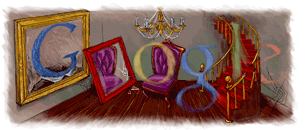
(/ jalowín /) is a party coming from the Celtic culture that is celebrated mainly in United States in the night of the day October 31. Children dress up for the occasion and walk the streets asking for sweets from door to door. After knocking on the door, the children pronounce the phrase "Trick or treat" or "Sweet or trick" (from the English expression "trick or treat"). If the adults give them candy, money or any other type of reward, it is interpreted that they have accepted the deal. If, on the other hand, they refuse, the boys will play a little joke on them, the most common being to throw eggs or shaving cream against the door.
The word Halloween is a derivation of the expression Englishwoman All Hallow's Eve (Eve of Saints' Day). It was celebrated in Anglo-Saxon countries, mainly in Canada, United States, Ireland and United Kingdom. But currently it is celebrated in almost all Western countries with greater or lesser presence.
Its origins date back to Celts[1] , and the party was exported to the United States by European emigrants in the nineteenth century, more or less around 1846. The expansive force of the culture of U.S. has made Halloween popular in other countries as well. Halloween is considered an American holiday in modern times.
The history of Halloween goes back more than 2.500 years ago, when the Celtic year ended at the end of summer, precisely on October 31 of our calendar. Cattle were taken from the meadows to the stables for the winter. On that last day, the spirits were supposed to be able to leave the cemeteries and seize the bodies of the living to resurrect. To avoid this, the Celtic villages littered the houses and "decorated" them with bones, skulls and other unpleasant things, so that the dead passed by in fear. Hence comes the tradition of decorating houses with sinister motifs on the current All Saints' Eve and also costumes. It is thus a festival associated with the coming of the pagan gods to life.
The children's journey in search of candies probably link with tradition dutch for the Feast of Saint Martin.
The meaning of the pumpkin
It is said that witches used the skulls of human victims and adorned them with candles inside. But really the origin of the pumpkins was the turnips, which were emptied to introduce an ember inside, and illuminate the way for the dead who came to earth that night.
Halloween origin
The fact that this party has survived to this day is, to some extent, thanks to the enormous commercial display and publicity generated in American commercial cinema. The image of North American children running through the dark streets disguised as goblins, ghosts and demons is typical, asking for sweets and sweets from the inhabitants of that dark and quiet neighborhood of houses. This image in those countries is not very far from reality and more or less the party goes like this.
Celtic festivals
The Celts celebrated four great festivals throughout the year:
- The Imbolc (or Imbolg): the first of these festivals was celebrated at the beginning of February (on February 1), when the first flowers began to grow, and was dedicated to the goddess Imbolc or Brigit, to whom the surviving animals were consecrated as the winter, especially to the females, since it was time to breed for the future winter.
- Beltane: the second party that was celebrated on May 1 (the eve of May 1 is Walpurgis night). This festival was dedicated to Belenos, the god of fire. on this day the fire was used to purify the animals and all the people with its smoke. Bonfires were lit at the top of the hills (for the Celts this was very important: the union they felt with nature was very strong, and from the top you can see all the greatness of our mother Earth), and these were extinguished the next day.
- The Lughnasa (or Lugnasad or Lamas): it was celebrated in the middle of June and was dedicated to Lug in Ireland, Lugus in Gaul and Lleu in Scotland. Although this deity is known by various names, he was the god of light. This festival was the one with the most agrarian character, celebrating a thanksgiving for the fertility of the animals and for the abundance of food reserves.
- Her hand: the last and most important Celtic festival took place on November 1st. This day meant New Year's Day (being the eve, October 31, "New Year's Eve"), and in turn indicated that a stage was beginning: winter.
I do not like anything at all the logo or google fomdoi that is mu mome